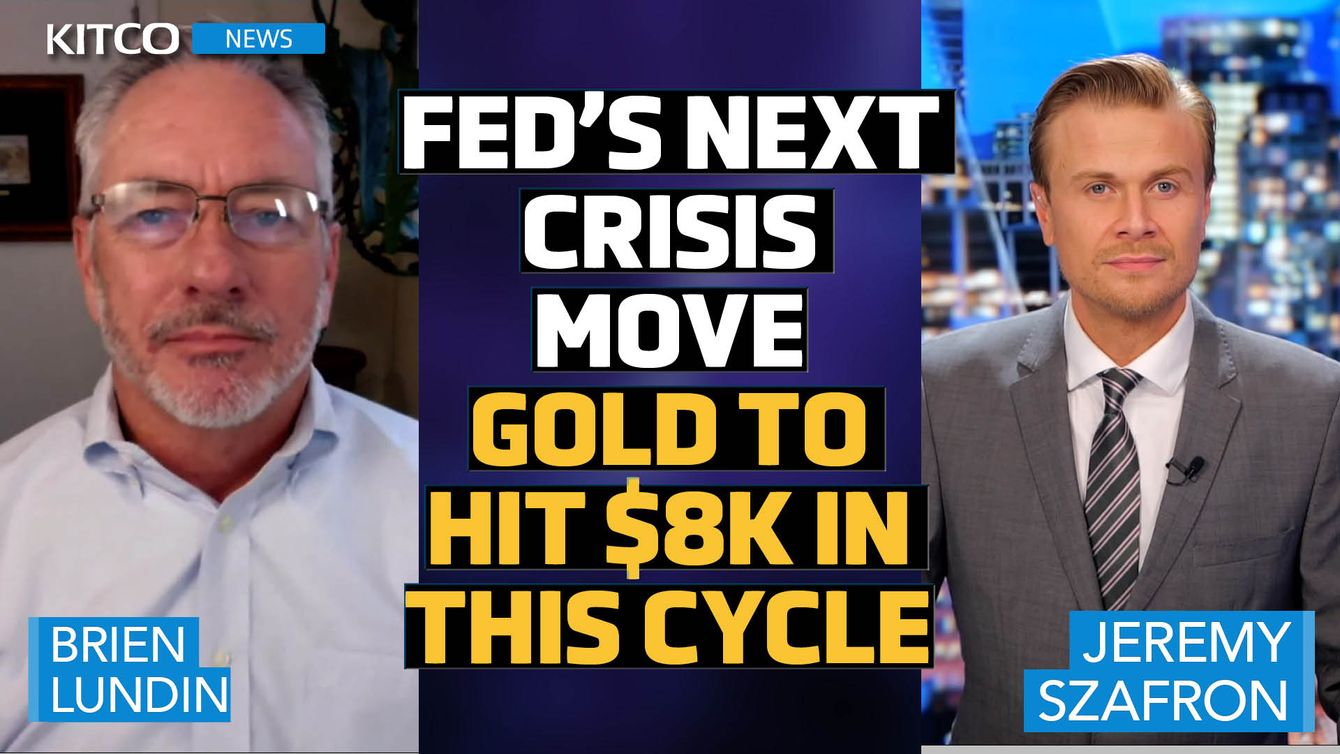Live Spot Gold
Bid/Ask
2,613.802,614.80
Low/High
2,611.302,686.40
Change
-69.90-2.60%
30daychg
-42.70-1.61%
1yearchg
+675.30+34.83%
Silver Price & PGMs

(Kitco News, Monday Nov. 11th, 2024) – The Federal Reserve’s money management will trigger the next crisis and force the U.S. central bank to embrace zero or even negative interest rates, warned Brien Lundin, Editor of Gold Newsletter and CEO of New Orleans Investment Conference.
“The Fed’s management of the price of money is going to create the next crisis, and when that happens, they are going to be forced to get back to zero interest rates,” Lundin told Kitco News’ anchor Jeremy Szafron.
Lundin noted that the Fed’s decision to cut rates by 25 basis points this week, following a 50-basis-point cut in September, is just the start of a longer rate-cutting cycle driven by the unsustainable cost of servicing the national debt.
“Successive rate cuts are baked into the cake because of the tremendous cost of servicing the federal debt at these interest rate levels. The debt rate tsunami on a corporate level – we’re going to see a lot of debt resets coming up in the months just ahead,” he said. “Companies had trouble paying and servicing those debts in a zero-interest rate environment. They will find it nearly impossible to service those debts at current interest rates. The Fed really has to get rates down. The longer it waits, the more urgently it will have to do so at some point.”
The U.S. economy might even need negative interest rates to deal with the next crisis. “My longer-term picture view is that we have to have negative real rates with debt loads this high. The cost of servicing that debt needs to be lower than the rate that the currency is depreciating. Otherwise, the entire house of cards collapses,” Lundin pointed out.
Lundin forecasts gold hitting the range of $6,000-$8,000 within this bull market cycle, basing his calculation on previous historical trading patterns. Watch the video above for insights and the timing of each cycle.
He also explains gold’s latest decoupling from its traditional inverse relationship to the dollar and bond yields.

